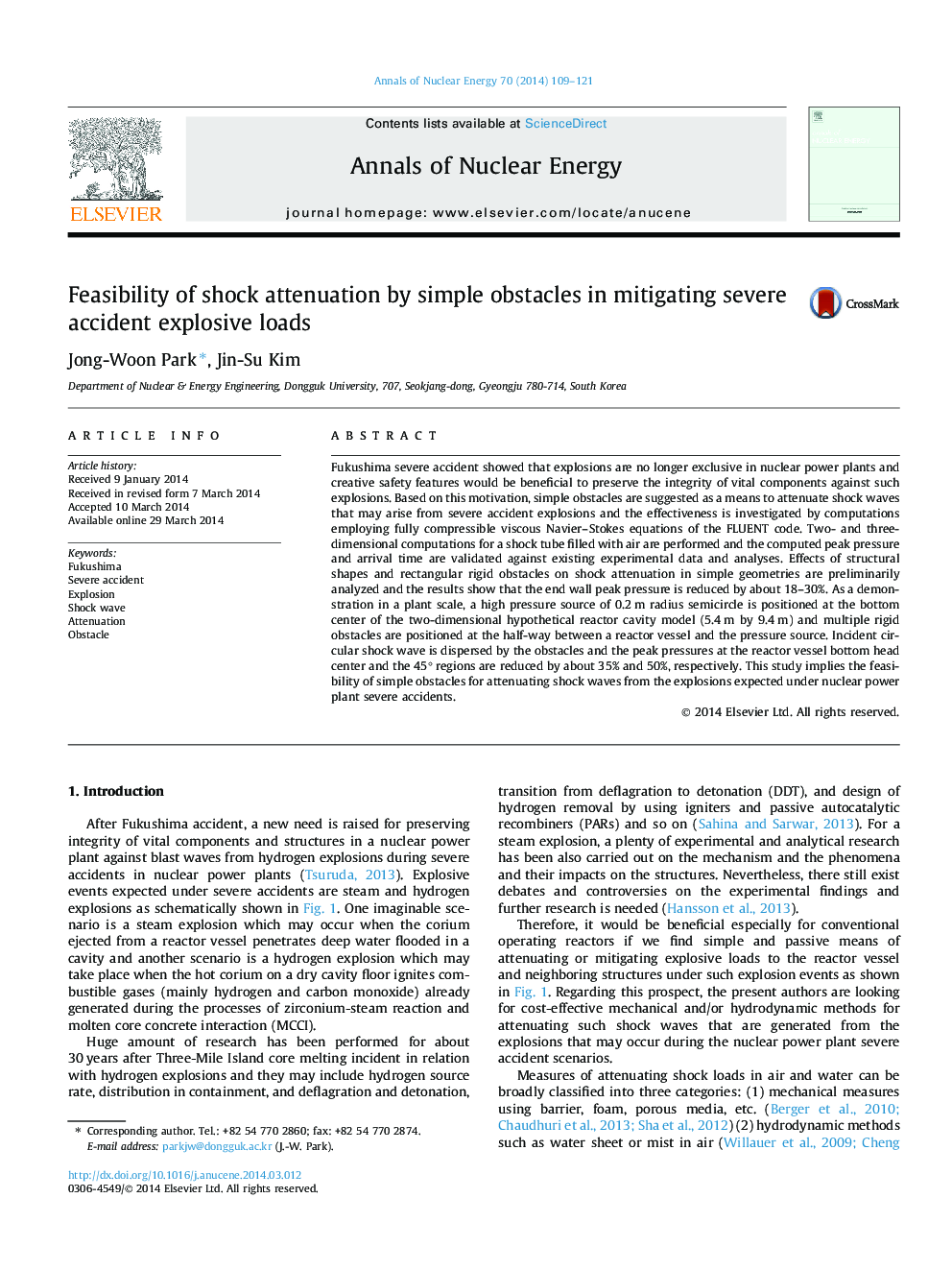| کد مقاله | کد نشریه | سال انتشار | مقاله انگلیسی | نسخه تمام متن |
|---|---|---|---|---|
| 1728316 | 1521128 | 2014 | 13 صفحه PDF | دانلود رایگان |
عنوان انگلیسی مقاله ISI
Feasibility of shock attenuation by simple obstacles in mitigating severe accident explosive loads
ترجمه فارسی عنوان
امکان تخریب شوک توسط موانع ساده در کاهش خطرات انفجاری ناشی از حادثه شدید
دانلود مقاله + سفارش ترجمه
دانلود مقاله ISI انگلیسی
رایگان برای ایرانیان
کلمات کلیدی
فوکوشیما، تصادف شدید، انفجار، موج شوک، تضعیفی، مانع،
موضوعات مرتبط
مهندسی و علوم پایه
مهندسی انرژی
مهندسی انرژی و فناوری های برق
چکیده انگلیسی
Fukushima severe accident showed that explosions are no longer exclusive in nuclear power plants and creative safety features would be beneficial to preserve the integrity of vital components against such explosions. Based on this motivation, simple obstacles are suggested as a means to attenuate shock waves that may arise from severe accident explosions and the effectiveness is investigated by computations employing fully compressible viscous Navier-Stokes equations of the FLUENT code. Two- and three-dimensional computations for a shock tube filled with air are performed and the computed peak pressure and arrival time are validated against existing experimental data and analyses. Effects of structural shapes and rectangular rigid obstacles on shock attenuation in simple geometries are preliminarily analyzed and the results show that the end wall peak pressure is reduced by about 18-30%. As a demonstration in a plant scale, a high pressure source of 0.2 m radius semicircle is positioned at the bottom center of the two-dimensional hypothetical reactor cavity model (5.4 m by 9.4 m) and multiple rigid obstacles are positioned at the half-way between a reactor vessel and the pressure source. Incident circular shock wave is dispersed by the obstacles and the peak pressures at the reactor vessel bottom head center and the 45° regions are reduced by about 35% and 50%, respectively. This study implies the feasibility of simple obstacles for attenuating shock waves from the explosions expected under nuclear power plant severe accidents.
ناشر
Database: Elsevier - ScienceDirect (ساینس دایرکت)
Journal: Annals of Nuclear Energy - Volume 70, August 2014, Pages 109-121
Journal: Annals of Nuclear Energy - Volume 70, August 2014, Pages 109-121
نویسندگان
Jong-Woon Park, Jin-Su Kim,
